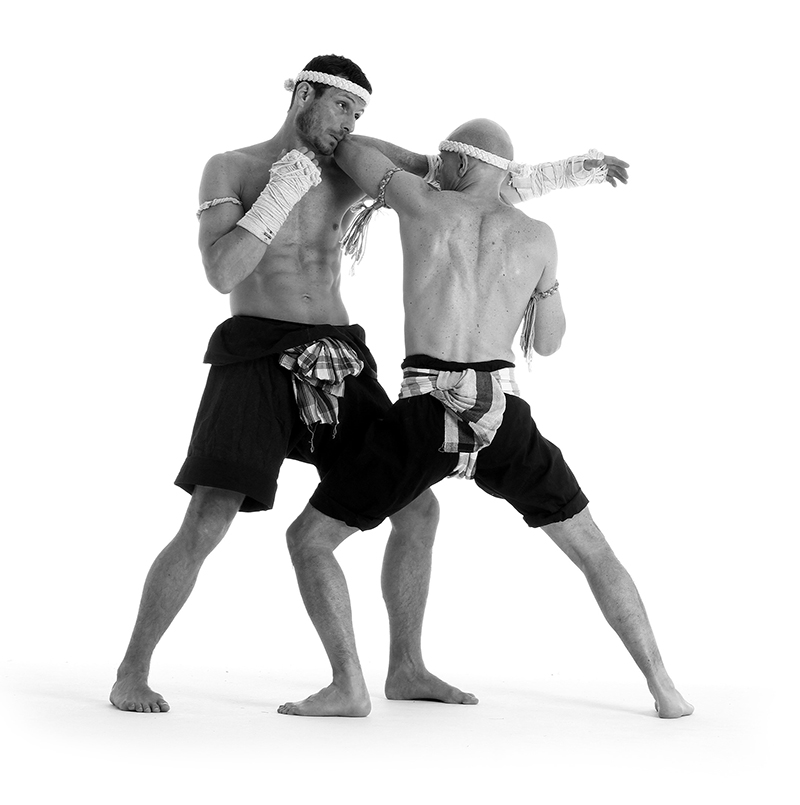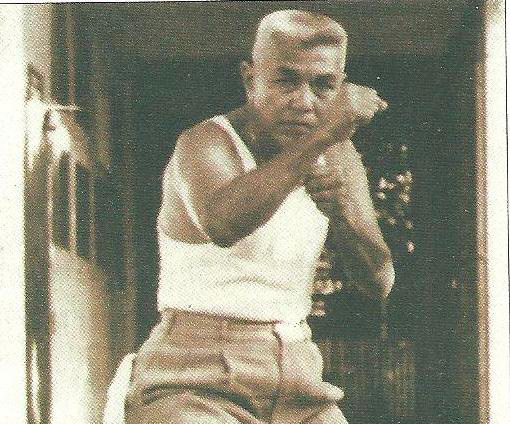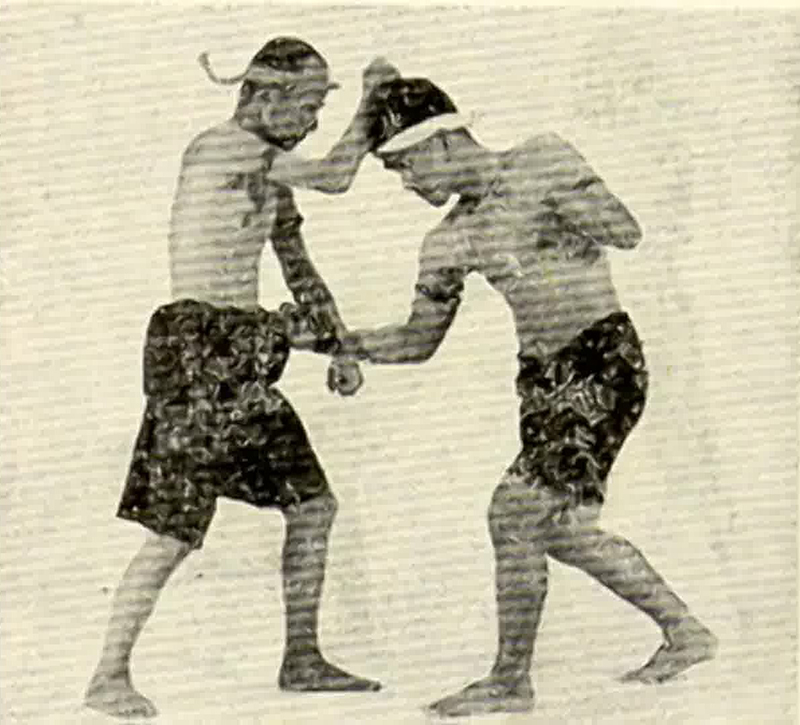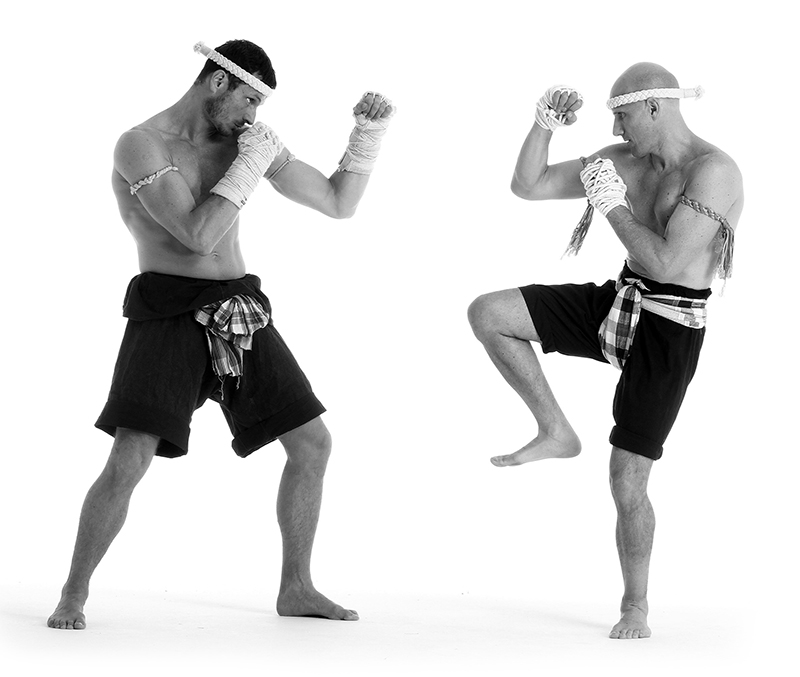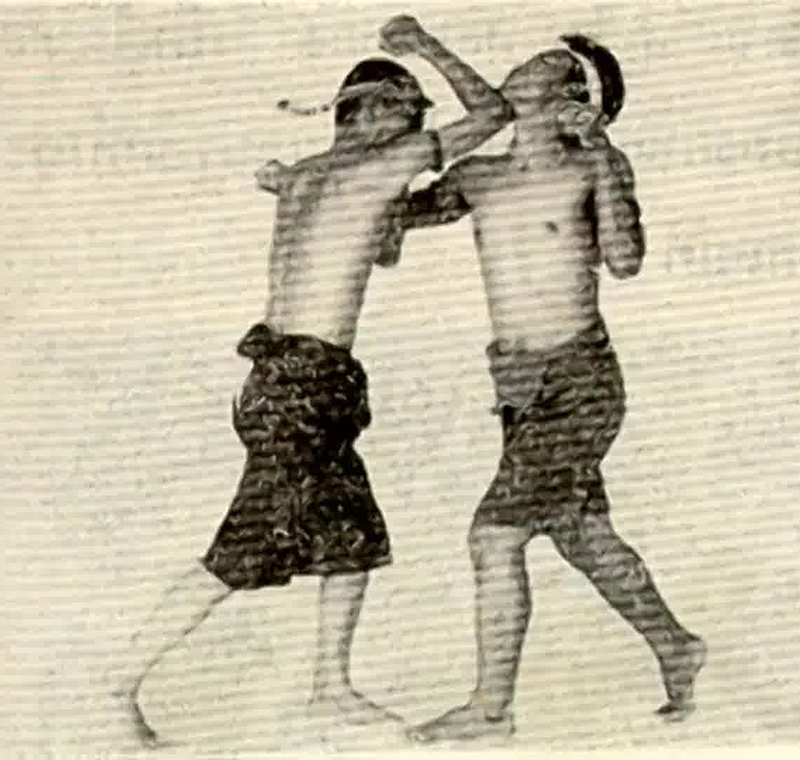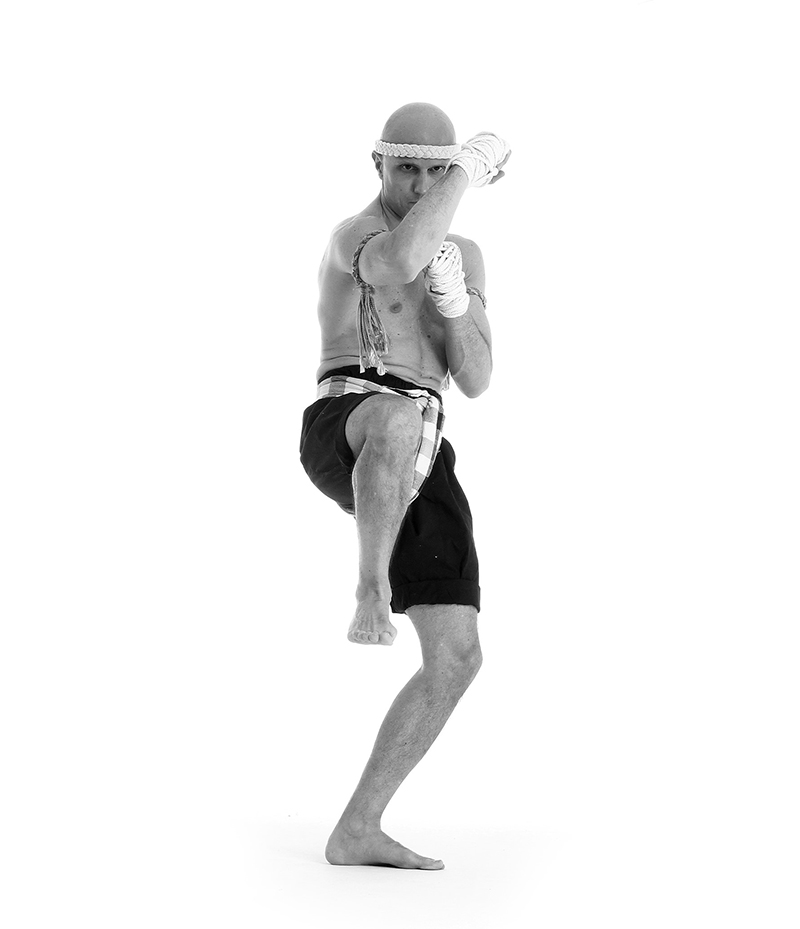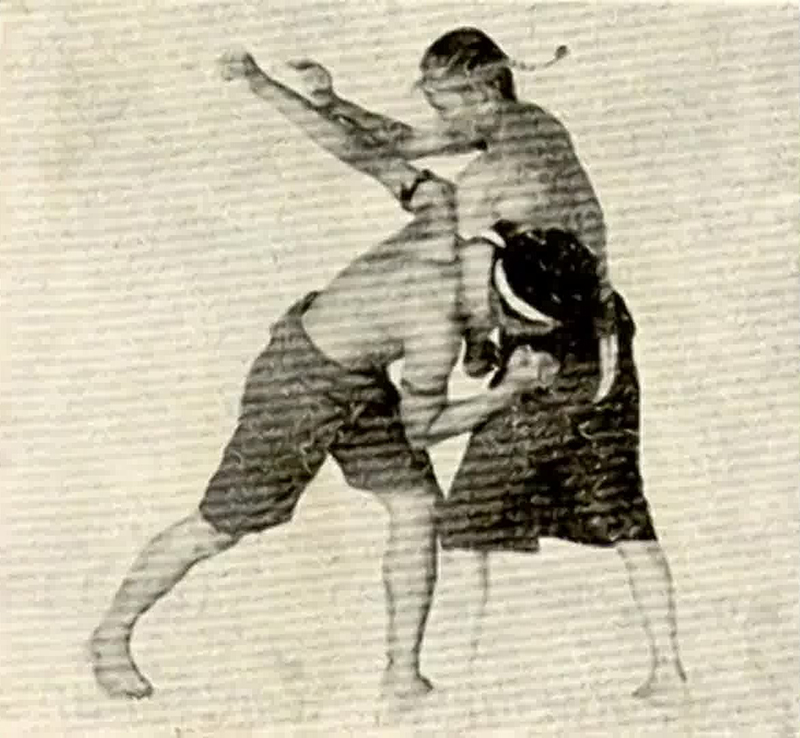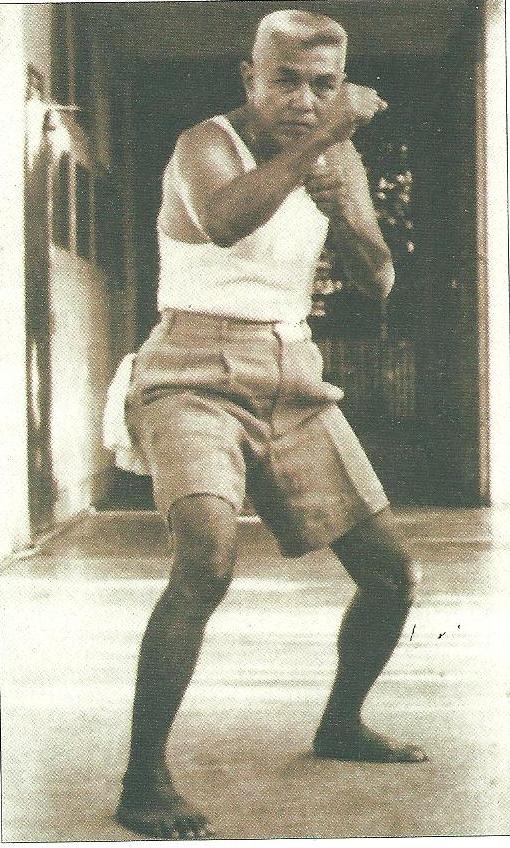
Muay Boran styles. Part 2
by Marco De Cesaris
Among the various traditional styles of Muay Thai original of specific geographic areas of Siam, one of the most renowned is undoubtedly Muay Chaiya. The origins of this style can be found in southern Thailand, more specifically in the city of Chaiya,ไชยา a former capital district of Surat Thani province.
I.History
Laem Pho Beach in the Chaiya district is thought to have been a Srivijaya Kingdom seaport in the 7th to 13th centuries. Srivijaya was a Malay city-state that grew to become an influential maritime power dominating a big part of western Maritime Southeast Asia. A theory even suggests that the Chaiya district in Surat Thani Province was the centre of Srivijaya empire. In fact, the name Chaiya might be derived from the original Malay name cahaya, meaning ‘light’, ‘glimmer’. Due to this origin, some experts claim that strong links between the Indonesian Martial Art called Silat and the Siamese Martial Art from Chaiya do exist.
From a technical perspective, the development of Muay Chaiya style occurred in four periods:
1.Beginning Period (Rama III – Rama IV). This is the Era of the style’s patriarch Phor Than Mar (see below) who was a former soldier turned monk. Muay Chaiya at this stage was a military combat style.
2.Flourishing Period (Rama V – Rama VI). The Art of Phor Than Mar was further developed by his followers. Several Chaiya boxers distinguished themselves in the Muay Kard Chiek Era (bound fist boxing). In 1909, Prong Chamnong one of the students of Phraya Wajisatayarak governor of Chaiya, fought in front of King Rama V at the funeral ceremony of Prince Urupongrat Sompot and for his valour was awarded the title of Knight (Muen Muay Mi Cheu).
3.Changing Period (Rama VII – Rama VIII). In this Era everything changed for Muay: the old traditions were abandoned and a “new” fighting Art was created (Muay Thai) mixing the empty- hand combat traditions of Siam with western Boxing. Muay Chaiya teachers and fighters had to adapt to the new situation from a technical and psychological perspective. This gradually brought to abandoning the old ways in favour of modern ring fighting techniques and training systems.
4.Conservation Period (Rama IX – to the present). With the help of Master Taweesit, Master Kethr and Master Tong (see below), the old traditions of Muay Chaiya were luckily kept alive, notwithstanding the huge popularity of professional Muay Thai. Thanks to their efforts and dedication this noble Martial Art is still alive and nowadays its popularity is starting to grow again.
II.Khru Muay Chaiya (Teachers)
Muay Chaya, story has it, was created by a monk of Chinese origins named Phor Than Mar who in his journeying came to stay in the village of Pum Riang (in the district of Chaya). It is said that he helped tame a wild elephant that was damaging several farms in the area. A temple was built to celebrate his success, the Wat Thung Chap Chang (The Temple of the Elephant Captured in the Field). Phor Than Mar eventually became the abbot of this temple. Before becoming a monk, Phor Than Mar had been a warrior who, tired of fighting and killing, chose the path of religion. Therefore, his original style was totally combat oriented: most of the skills he transferred to his students were meant to kill and maim, in pure military style. Along the years, some of his notable students adopted slightly different approaches to fighting, combining their own experience with the traditional precepts taught by the first Patriarch of the style. After Phor Than Mar, among the many renowned teachers of the Martial Art of Southern Thailand, two names stand out over all the others: the first one in Arjarn Kethr Sriyabhai and the other is his student Khru Tonglor Yaleh.
Arjarn Kethr Sriyabhai.
He was the son of Phraya Wachee Sriyabhai, the Mayor of Chaiya City in Rama V Era. His father was his first teacher since he was 8 years old. In fact, Phraya Wachee was the heir of the Muay Chaiya lineage and was the one who first transferred the original skills of Phor Than Mar to his son. In his life, Arjarn Kethr went on to train with 12 more masters of Muay: among them two of the more influential were the famous Kimseng Taweesit and Visarn Darunkorn. Muay Thai was more than just a form of physical training for him; it was a form of Art passed down by the Masters of old to be preserved for the future generations. Arjarn Kethr, served as the Lumpini Boxing Stadium’s Manager for many years and contributed to Muay Thai magazines with regular columns, often criticizing the modern development of the Art and educating the public about the old traditions of Muay Kard Chiek. He continued to teach until his last moments at the age of 76.
Born in a Muslim family, Kru Thonglor learned Muay Thai from Master Kethr Sriyabhai and from Master Kimseng Taweesit. Kru Thonglor Yalae (a.k.a Thong Cheua Chaiya) had a long fighting career, competing in at least 200 bouts facing all the leading boxers of his time. As a consequence, hand techniques were among his strong points, along with an arsenal of joint breaking and throwing techniques that he inherited from his Muay Chaiya teachers. Most scholars believe that it is hard to find anyone his equal in combat skills and talent.
III.Core technical features
Muay Chaiya is an elegant fighting style that has always placed great emphasis on a solid guard position that allows the defender to repel the attacks thanks to hard elbow and knee blocks blended with fluid defensive movements. Defensive maneuvers are always combined with explosive counter-attacks: hands, elbows, forearms, knees, shins and feet are used to strike the opponent from all angles. The core technical features of Muay Chaiya are the following:
– 5 signature elements: these elements represent the characteristic features that identify Muay Chaya style. Jot Muay (guard position with both feet on the ground), Tah Khru (Master guard position standing on one foot), Wai Khru (paying respect to teachers), Kard Chiek (hand wrapping), Kruang Ruang (amulets).
– 4 Pahuyuth skills: Muay Chaiya practitioners base their fighting style on a skillful use of the four main body weapons (Mahd, Thao, Kao, Sok) to defend and attack the opponent. Let’s see them more in details.
-Mahd: compared to Muay Korat punches, this style’s hand techniques are less focused on power and are meant to be used from various angles against all weak points, from head to toes. When striking, the fist can be kept clenched or the open hand can be used to hit, slap, grab, pinch, squeeze.
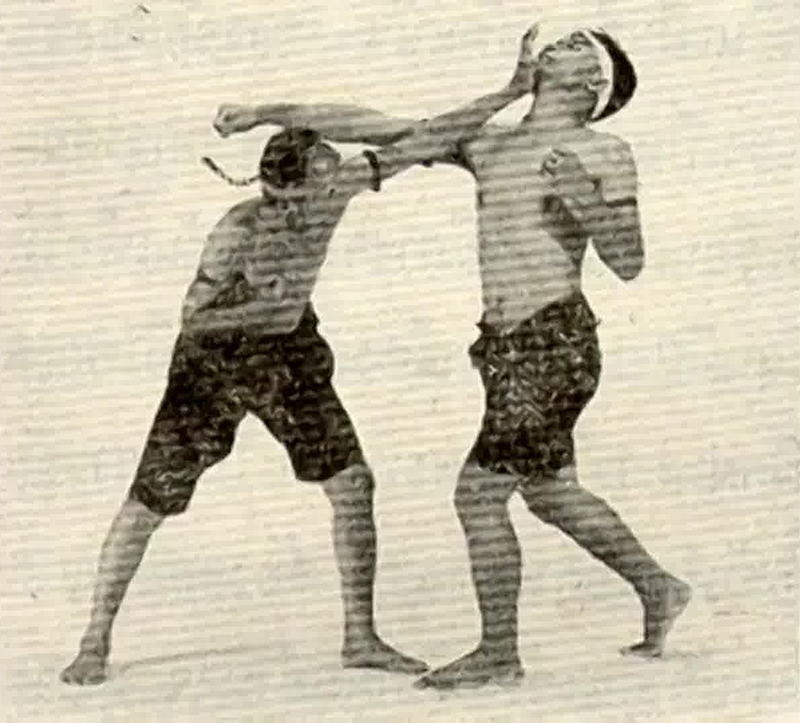
-Thao: Muay Chaiya’s kicks are considerably less powerful than Muay Korat’s. However, a clever combination of defensive maneuvers and sidestepping can put the Chaiya boxer in favourable positions to unleash vicious kicks to the opponent’s vital points with deadly results.
-Kao: a Muay Chaiya boxer knows how to fight at close range. His knees represent a formidable weapons both in combination with grabs and locks and in connection with hops and jumps. This style’s vicious knee blows are always aimed at destroying the opponent’s weak spots.
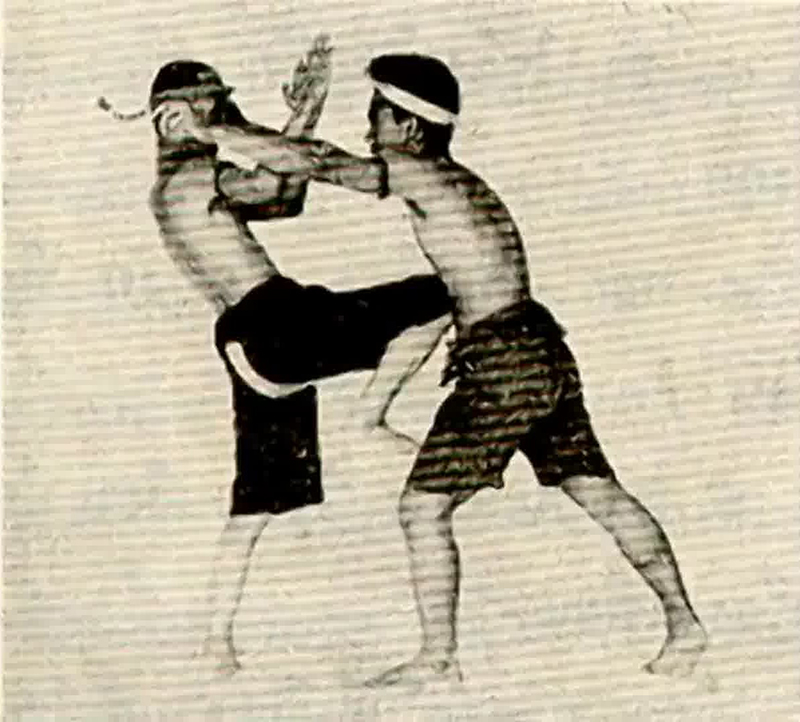
-Sok: elbow techniques are the trademark of Muay Chaiya. An expert Chaiya boxer can attack and defend using his elbow in a number of ways. He can strike the opponent with his elbows from long, medium and short range. From a distance, he can jump, spin, hop and then unleash extremely powerful blows to the head. At medium range, he can dodge, parry or block the attacks and counter to the head, body or legs paralyzing the muscles, breaking the bones or damaging the internal organs. At close range, the deceptive Muay Chaiya elbow strikes can cut the skin, break the bones and knock the opponents out in a blink of an eye.
-Physical drills: Chaiya boxers train the following skills on a regular basis to enhance their fighting power and become experts in posturing, defending and attacking. Tah Pan Mahd, Tah Pan Kaen, Tah Phan Mahd, Tah Pan Mahd Plik Liem, Tah Len Muay, Tah Tad Mala, Tah Kradot Tob Sok, Tah Yang Saam Khum, Tah Wiang Khaeng, Tah Chad.
-Mae Mai and Look Mai: Muay Chaiya students are trained to be skilled in one Mae Mai or fundamental technique. This style’s Mae Mai is its typical guard position or Jot Muay. All the fighting maneuvers known as Look Mai are the result of the proper application of a perfect Jot Muay.
-Secret tactics: several combat tactics have been handed down since the ancient time from teacher to student and are part of the advanced curriculum of this style. Without a proper understanding of these sophisticated tactics it is impossible for a Muay Chaiya practitioner to get to the core of this complex Martial Art. Some of the most famous secret tactic of Khru Muay Chaiya are the following.
a) Throw, overlay, seize, break are the grappling strategies aimed at throwing and finishing the opponent on the ground or at dislocating his joints to permanently disable him. These skills were the strong point of Khru Tong’s style, together with his punching techniques.
b)Shadow, Join, Capture, Take the back, Break the neck. This ancient “motto” referred to the best systems to seize the opponent, get a dominant position and finish him.
c)Punish, pursue, follow up. The Muay Chaiya teachers of old showed us the way to control the fight by viciously counter striking the opponent’s offence, immediately taking the initiative keeping on putting pressure on him until we render him helpless.
d)When he is strong I am soft, when he is soft I strike, when he escapes I chase. In this case the ancient Khru Muay Chaiya conveyed the crucial martial concept of adaptability. Never stay in a fixed position, never stick to a single combat strategy but adapt to the characteristics of the opponent and to the ever changing variables of a fight. This ideas correspond to the core precepts of Muay Kiao (see article on Muay Korat).
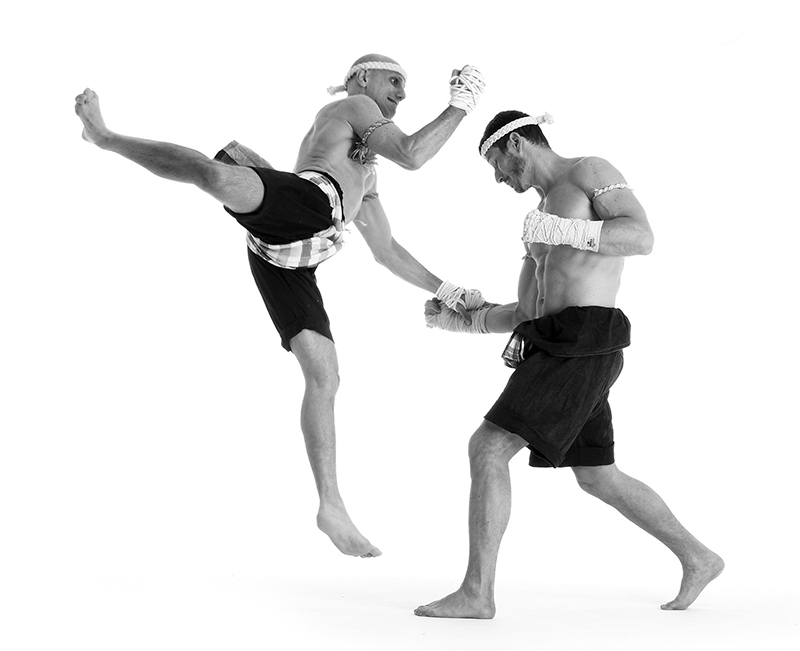
Special thanks to Khru Chattuchai Champahom.
For more information on Muay Chaiya techniques:https://www.muaythai.it/muay-styles/muay-chaiya/


